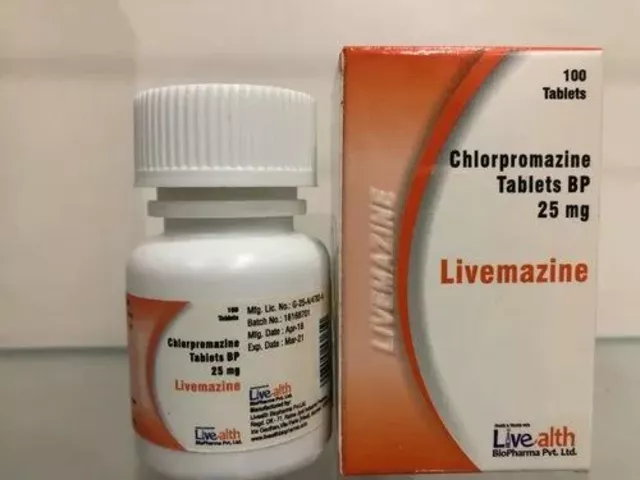Feeling boxed in by your current birth control? You’re not alone—Ethinyl estradiol/norgestimate is just one of plenty of ways to prevent pregnancy, and let’s be honest: it doesn’t work the same for everyone. Maybe you’re tired of daily pills, annoyed by side effects, or just curious about what else is out there.
This is the lowdown on five real options that give Ethinyl estradiol/norgestimate a run for its money. You’ll get the straight facts (not sales pitches)—so you know how they work, what’s great about them, and which trade-offs you might face. Real stories, clear pros and cons—not just lists of side effects you’ve got to decode. Whatever your reason for needing a switch, you’ll walk away with the practical info you need to make the right call for your body and your schedule.
Nexplanon
Here’s the scoop on Nexplanon, a birth control option that steps away from the daily routine. Nexplanon is a small, flexible rod that a doctor slides under the skin of your upper arm. It releases a steady dose of etonogestrel, a type of progestin, for up to three years. That’s right—no daily pills, patches, or rings to remember.
Nexplanon works mostly by shutting down ovulation, meaning your ovaries take a break from releasing eggs. It also thickens your cervical mucus (making it harder for sperm to pass through) and thins your uterine lining, just in case any eggs try to sneak by. Statistically, it’s over 99% effective when placed correctly, making it one of the most reliable birth control options out there.
Pros
- Long-lasting protection: Works for over three years. Most people forget it’s even there.
- Set it and forget it: No maintenance — once it’s in, you’re covered.
- Super reliable: Less than 1 out of 100 users get pregnant each year.
- No estrogen: Good pick for those who can’t have estrogen due to blood clot risks or other health reasons.
Cons
- Professional procedure needed: Only a doctor can insert and remove it, which means a visit to the clinic both times.
- Possible skin reaction: You might see swelling, bruising, or tenderness when you first get it.
- Bleeding changes: Irregular periods are common—some people stop having periods altogether, others have spotting or unpredictable bleeding.
There’s another thing people don’t always tell you: removing Nexplanon isn’t as quick and easy as popping out a contact lens. The doctor will numb your arm, make a tiny cut, and gently pull it out, but it’s done in the office and only takes a few minutes.
| Method | Effectiveness (%) | Lasts |
|---|---|---|
| Nexplanon | >99 | 3 years |
| Birth control pill | 91* | Daily |
| Condom | 85 | One use |
*Perfect use raises this to about 99%—but real life gets in the way for most people.
When it comes to straightforward convenience and top-tier reliability, Nexplanon really is in a different league. If you want to make birth control nearly invisible in your day-to-day life, this is a solid alternative to ethinyl estradiol/norgestimate pills.
Copper IUD
The Copper IUD (intrauterine device) is probably the most popular hormone-free birth control option on the market. It’s a tiny T-shaped piece of plastic wrapped in copper wire, and it sits inside your uterus—pretty much silently doing its job for up to 10 years. No daily pill, no monthly pharmacy runs.
Here’s how it works: sperm hate copper. The presence of copper makes it tougher for sperm to move around and reach an egg, so fertilization basically gets shut down. It kicks in right away after insertion—so if you need emergency contraception, it doubles as that, too.
"The copper IUD is more than 99% effective at preventing pregnancy, and it's one of the longest-lasting forms of reversible contraception available." — Planned Parenthood
If you like stats, get this: in the first year, fewer than 1 in 100 women using the copper IUD will get pregnant. That’s better odds than nearly any pill, including ethinyl estradiol/norgestimate alternatives.
Pros
- Long-lasting (up to 10 years without needing replacement)
- No hormones—good option if you can’t (or don’t want to) take estrogen
- Works as emergency contraception if placed within 5 days after unprotected sex
- Immediate return to fertility when removed
- Low-maintenance: insert it and forget about it
Cons
- Insertion and removal require a trained provider—which can be uncomfortable for some
- Can cause heavier and crampier periods, especially for the first few months
- Does not protect against STIs
- Possible (but rare) risks: device expulsion, tiny chance of uterine perforation
| Feature | Copper IUD |
|---|---|
| Effectiveness | Over 99% |
| Duration | Up to 10 years |
| Hormonal | No |
| Emergency contraception | Yes, if inserted within 5 days |
If you’re tired of worrying about pills or patches, or if hormones just aren’t your friend, the copper IUD delivers steady, reliable protection without complicating your daily life. Just make sure you’re okay with the potential for heavier periods—at least at first.
Levonorgestrel IUD
If you’re done with remembering pills or you just want a set-it-and-forget-it option, the levonorgestrel IUD is a popular choice. Brand names for this one include Mirena, Kyleena, and Skyla. They all work the same way: a tiny T-shaped device sits in your uterus and slowly releases a steady dose of progestin (levonorgestrel).
How does it actually work? It thickens cervical mucus (so sperm can’t get very far) and sometimes stops ovulation. Most devices last between 3 to 7 years—Mirena is the heavy-hitter, protecting for up to 8 years as of 2024.
Pros
- Super effective—less than 1% of users get pregnant per year.
- Low-maintenance: you basically forget it’s there.
- Periods usually get lighter and may stop over time (some folks see a 90% reduction in period pain and flow).
- All hormone, no estrogen—good for people who don’t want or can’t take ethinyl estradiol/norgestimate.
- Fertility bounces back fast if you ever want to get pregnant later.
Cons
- Upfront cost can be high without insurance (although it saves money long-term).
- Needs a healthcare provider for insertion and removal (can be uncomfortable, but it’s quick).
- Some people have spotting or irregular bleeding, especially the first few months.
- Comes with a low risk of expulsion (2–10% in the first year) or device shifting.
| IUD Brand | Years of Protection | Main Hormone |
|---|---|---|
| Mirena | 8 | Levonorgestrel |
| Kyleena | 5 | Levonorgestrel |
| Skyla | 3 | Levonorgestrel |
Doctors love these for their reliability and long-term peace of mind, especially when sticking to a routine is tough. If heavy periods or bad cramps bug you, the levonorgestrel IUD could be a practical fix and a strong alternative to ethinyl estradiol/norgestimate pills.

Depo-Provera
If remembering to take a birth control pill every day feels like a chore, Depo-Provera might sound like a breath of fresh air. It’s a shot—literally. Depo-Provera is an injection you get every three months, so you only have to think about birth control four times a year.
This method uses medroxyprogesterone acetate, a progestin hormone that mostly works by blocking ovulation. When there’s no egg to fertilize, there’s no chance for pregnancy. It’s been around for decades, so there’s a ton of real-world data about how it holds up—you’re looking at a failure rate of less than 1% when you get your shots on schedule.
Here's a quick breakdown of what you can expect if you go with Depo-Provera:
Pros
- You only need an injection every 3 months—no daily pills, patches, or rings to mess with.
- Highly effective as birth control when used on schedule—comparable to many IUDs and implants.
- No estrogen, so it’s a strong option for those who can’t use ethinyl estradiol/norgestimate or have estrogen-related side effects.
- May reduce menstrual cramps and make periods lighter, or stop them entirely for some people.
Cons
- It requires a clinic visit every 12-13 weeks—forget an appointment and protection drops fast.
- Can cause irregular bleeding, spotting, or periods to go away altogether (which can feel strange if you’re not expecting it).
- Some users notice weight gain or changes in mood, skin, or appetite.
- It can take up to 10 months (sometimes even longer) for fertility to return after the last shot.
Want to see how Depo-Provera stacks up? Here’s a quick glance at typical use stats for Depo compared to ethinyl estradiol/norgestimate pills:
| Method | Typical Failure Rate | Hormone Type | Dosing |
|---|---|---|---|
| Depo-Provera | <1% when shot on time | Progestin only | Every 3 months (injection) |
| Ethinyl estradiol/norgestimate | 7% (missed pills) | Estrogen + progestin | Daily (pill) |
One heads up: Depo-Provera can slightly lower bone density if you use it long term (years), but this usually comes back after stopping it. Docs might check this if you use the shot for several years in a row. It’s something to consider, especially if you have risk factors for osteoporosis.
NuvaRing
If you’re over daily pills but don’t want anything implanted for years, NuvaRing is worth a look. It’s a small, flexible ring you pop in yourself—right where it counts, inside your vagina. Once it’s in, it quietly releases a combo of estrogen and progestin, keeping things simple for about three weeks per cycle. There’s no remembering a pill every morning or booking appointments for insertions, making it a handy middle ground between daily and long-term options.
Most people find putting in and taking out the NuvaRing pretty straightforward after the first try. If you don’t want to deal with daily routines, this can make life way easier. Just slip it in, leave it for three weeks, then take it out for a week off (that’s when you’ll get your period). Then, start again with a new ring. It’s that simple.
Pros
- Only needs to be changed once a month
- Lower estrogen dose than many pills (less risk of estrogen-related side effects)
- No daily remembering—set and forget for three weeks
- Similar birth control effectiveness as oral contraceptives when used correctly (over 99% with perfect use, about 91% typical use)
- Periods tend to be lighter and less painful
- Some people notice improved acne
Cons
- Needs manual insertion and removal (some find this awkward at first)
- Must be comfortable touching your body
- May fall out accidentally, especially during sex (though rare)
- Similar risks for blood clots as other combined hormonal contraceptives
- Not for people with certain health risks (history of blood clots, certain migraines, or smoking over age 35)
- Some report vaginal irritation or increased discharge
NuvaRing offers a modern workaround for anyone tired of swallowing pills or fussing with shots. Doctors often recommend it for busy people looking for something reliable without a big commitment.
| Method | Change Frequency | Perfect Use Efficacy | Contains Estrogen | Notable Side Effects |
|---|---|---|---|---|
| Vaginal Ring | Monthly | 99+% | Yes | Irritation, rare expulsion |
It doesn’t fit everyone, but if you want convenience without a major procedure, NuvaRing deserves a spot on your shortlist of Ethinyl estradiol norgestimate alternatives. If you have questions about insertion or if you’re a candidate, don’t hesitate to hit up your healthcare provider—they’ve probably heard it all before.
Summary Table
If you’re serious about finding the right alternative to ethinyl estradiol/norgestimate, a quick look at the essentials helps. Here’s a no-nonsense comparison that gets straight to what matters—effectiveness, method, commitment, and common issues you could run into with each option.
| Alternative | How It's Used | How Long It Lasts | Efficacy | Main Pros | Main Cons |
|---|---|---|---|---|---|
| Nexplanon | Subdermal implant | Up to 3 years | >99% | Set and forget, super reliable, works for years | Needs healthcare provider for insertion/removal; possible irregular bleeding |
| Copper IUD | Device placed in uterus | 5-10 years | >99% | No hormones, lasts longest, almost zero maintenance | Heavier periods for some, must see a provider for fitting and removal |
| Levonorgestrel IUD | Device placed in uterus | 3-8 years | >99% | Light periods (sometimes none), long-term, low daily hassle | Must be placed by a provider, can cause spotting at first |
| Depo-Provera | Injection by provider | 3 months | About 94% | Quick appointments, nothing daily to remember | Can mess with cycles, possible weight gain, need shots every 12 weeks |
| NuvaRing | Self-inserted vaginal ring | 1 month | About 91% | Monthly not daily, easy to use at home | Must remember schedule, can fall out, possible vaginal irritation |
No single alternative is just plain ‘better’ than ethinyl estradiol/norgestimate. It depends on your routine, comfort level with procedures, and how much you mind tracking schedules. The options range from zero-hormone choices like the copper IUD to hassle-free implants like Nexplanon. Some methods, like Depo-Provera or the NuvaRing, keep some flexibility if you’re not looking for something super long term. Write down what matters most—low maintenance, hormone-free, or cost—and use this table to help you narrow it down fast.





Post A Comment